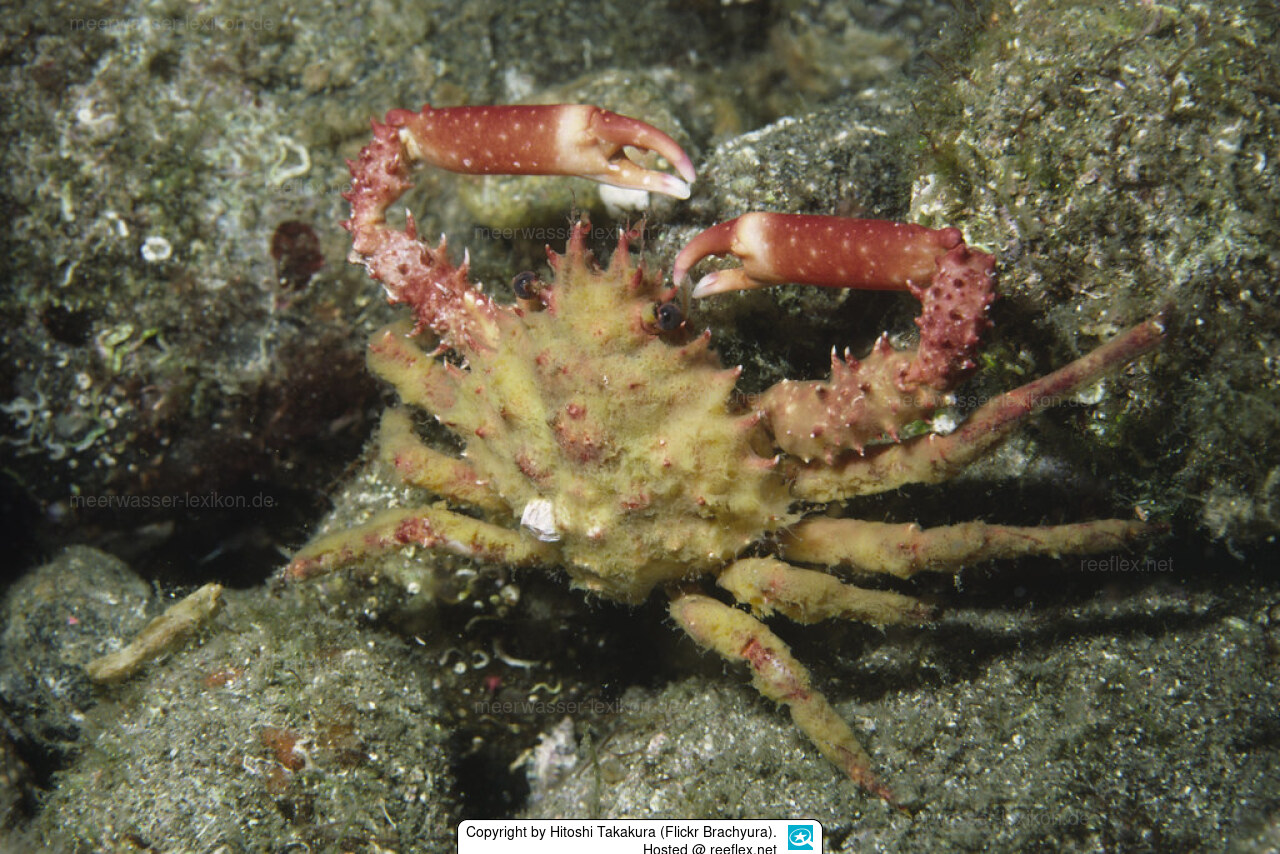Info
Schizophrys aspera (H. Milne Edwards, 1834)
Uses to cover itself completely with algae, other marine organisms, detritus.
sealifebase: Poisonous to eat !
Synonymised names
Inachus bifidus Marion de Procé, 1822 · unaccepted (nomen oblitum)
Maja (Dione) affinis De Haan, 1839 · unaccepted > junior subjective synonym
Mithrax (Schizophrys) triangularis Kossmann, 1877 · unaccepted > junior subjective synonym
Mithrax (Schizophrys) triangularis var. indica Kossmann, 1877 · unaccepted > junior subjective synonym
Mithrax affinis de Brito Capello, 1871 · unaccepted > junior subjective synonym
Mithrax asper H. Milne Edwards, 1831 · unaccepted > superseded combination
Mithrax quadridentatus MacLeay, 1838 · unaccepted > junior subjective synonym
Mithrax spinifrons A. Milne-Edwards, 1867 · unaccepted > junior subjective synonym
Mithrax triangularis Kossmann, 1877 · unaccepted > superseded combination
Schizophrys serratus White, 1848 · unaccepted > junior subjective synonym
Schizophrys serratus White, 1847 · unaccepted > nomen nudum
Uses to cover itself completely with algae, other marine organisms, detritus.
sealifebase: Poisonous to eat !
Synonymised names
Inachus bifidus Marion de Procé, 1822 · unaccepted (nomen oblitum)
Maja (Dione) affinis De Haan, 1839 · unaccepted > junior subjective synonym
Mithrax (Schizophrys) triangularis Kossmann, 1877 · unaccepted > junior subjective synonym
Mithrax (Schizophrys) triangularis var. indica Kossmann, 1877 · unaccepted > junior subjective synonym
Mithrax affinis de Brito Capello, 1871 · unaccepted > junior subjective synonym
Mithrax asper H. Milne Edwards, 1831 · unaccepted > superseded combination
Mithrax quadridentatus MacLeay, 1838 · unaccepted > junior subjective synonym
Mithrax spinifrons A. Milne-Edwards, 1867 · unaccepted > junior subjective synonym
Mithrax triangularis Kossmann, 1877 · unaccepted > superseded combination
Schizophrys serratus White, 1848 · unaccepted > junior subjective synonym
Schizophrys serratus White, 1847 · unaccepted > nomen nudum







 Hitoshi Takakura (Flickr Brachyura), Japan
Hitoshi Takakura (Flickr Brachyura), Japan









